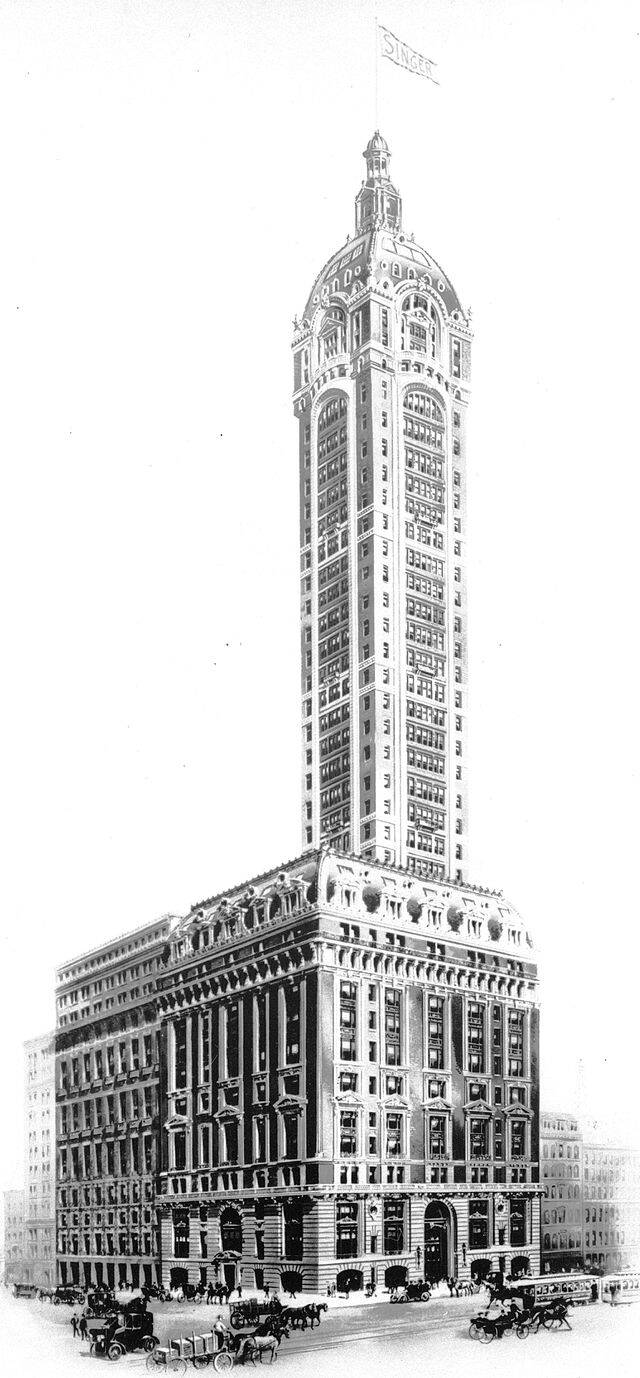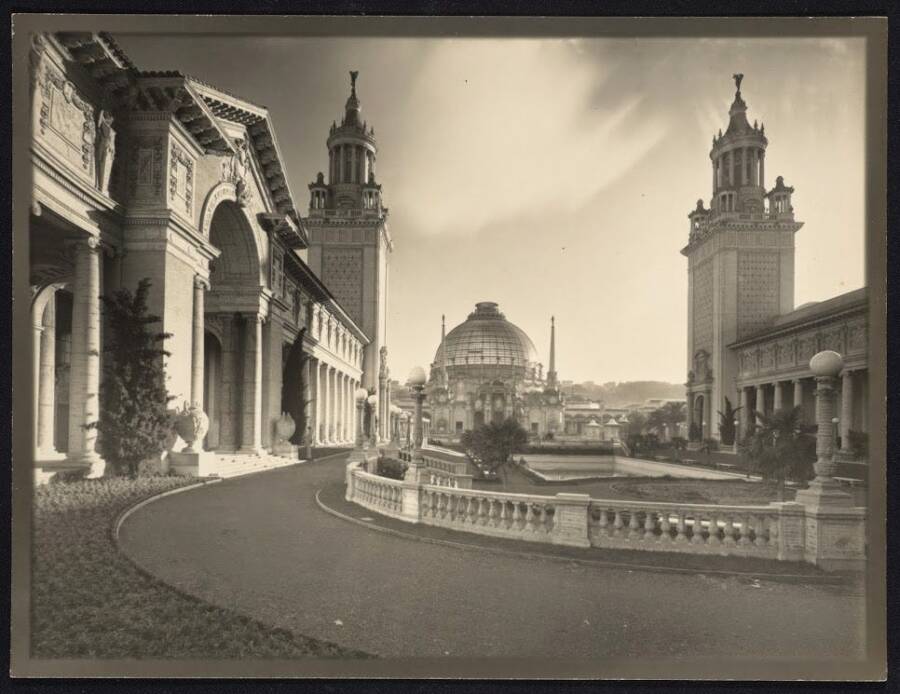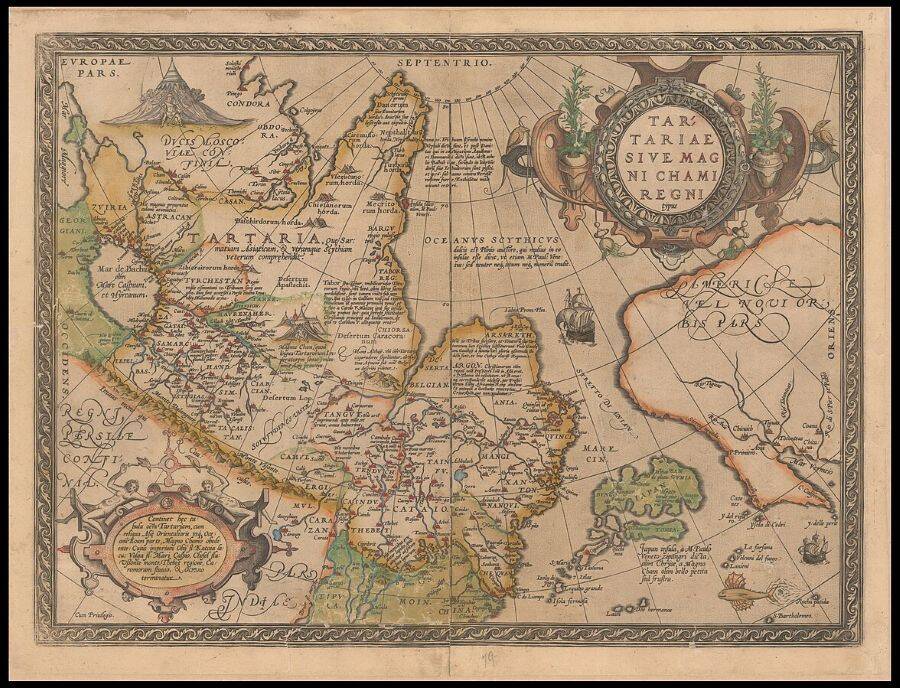Tartaria was purportedly an advanced ancient empire that built some of the world's most iconic landmarks before it was destroyed by mudslides and then deliberately erased from history.

Russian Geographical SocietyA 17th-century map of central Asia that refers to the region of “Tartary.”
One of the most bizarre conspiracy theories that has emerged in recent years surrounds an alleged ancient civilization known as the Tartarian Empire. While Tartary was a real place, the modern myths about its technological prowess and the “mud floods” that destroyed it are far from true.
As the theory goes, the Tartarians built some of the world’s most famous landmarks, from the Pyramids of Giza and the Great Wall of China to the Taj Mahal and the United States Capitol. Then, a series of disasters destroyed the empire, and governments across the globe orchestrated a massive cover-up to erase its existence from history.
But why? This seems to be the question that even believers in the conspiracy can’t answer. The myth has roots in Russian nationalism, but it’s mostly spread through online forums and videos posted on social media, so there’s no single voice of authority on the matter — and many theorists’ claims contradict each other.
Despite the lack of any real evidence of its existence, the Tartarian Empire is now the center of an alternative history that’s become known as the “QAnon of Architecture.”
The Long-Lost “History” Of The Tartarian Empire

Public DomainSome theorists believe the history of New York City’s Singer Building was made up to hide the existence of the Tartarian Empire.
If you ask online theorists, the Tartarian Empire was once a technologically advanced empire of people who influenced history’s most important societies and built large structures in all corners of the world. Some believers claim that Tartaria conquered the entire globe, while others say it was just a sprawling empire in Asia with a significant sphere of influence.
No matter Tartaria’s physical size, however, a major part of the theory surrounding its existence is that many of the iconic buildings and monuments in major cities throughout the world today weren’t actually the work of modern architects. Instead, they are the remnants of the once great Empire of Tartaria.
From structures as ancient as the Egyptian pyramids to the more modern U.S. Capitol, theorists believe all of it was the work of the Tartarians. So, where did they go?
As the story goes, a series of “mud floods” wiped the Tartarian Empire off the face of the Earth, but some buildings escaped destruction. Depending on who you ask, this flood took place as recently as 100 years ago.
At the center of the conspiracy theory is the belief that history as we know it didn’t happen — or, at least, not on the timeline we have been taught.
Inside The Perplexing Conspiracy Theory
Believers in this lost empire have developed an alternative history of the Earth, one that claims the Great Wall of China and Old Penn Station in New York City could have been built by the same people. Essentially, theorists claim modern buildings are actually 1,000 years old and survived the flood that flattened the rest of the Tartarians’ work.

Library of CongressOld Penn Station in New York City is believed to be a remnant of the Tartarian Empire, according to the conspiracy theory.
In the wake of the mud floods, there was a “Great Reset,” in which buildings and structures that still stood following the disaster were given fake, sometimes modern, backstories by those who control the world.
The theory labels modern architecture as brutalist, while anything that would be considered pre-modern — such as classical, Beaux-Arts, and Second Empire styles of architecture — falls under the label of Tartarian architecture. For example, in the U.S., many 19th-century Gilded Age buildings are actually old Tartarian palaces, according to online theorists.
Believers also agree that, while the mud floods destroyed much of Tartaria, the resulting damage from both World War I and World War II supposedly contributed to the erasure of the empire. Indeed, they claim that the wars were planned to intentionally destroy what was left of Tartarian cities.
Despite the focus on architecture, it seems many of the believers of this theory are not architects or engineers. The myth of the Tartarian Empire is one that is ever-expanding. It is more of a collection of different ideas, rather than a cohesive timeline of events that’s agreed upon by all who subscribe to the theory.
But how did it begin?
From Russian Nationalism To The “QAnon Of Architecture”
The stories of a lost Tartarian Empire stem from a Russian nationalistic pseudo-scientific theory, one that is not too different from the current version of the story. Essentially, the theory was that Tartaria was the true name for Russia, and before the Russian Empire and subsequent Soviet state, a powerful Tartarian Empire existed in central Asia.

Public DomainTheorists say that temporary buildings constructed for the Panama-Pacific International Exposition, the World’s Fair held in San Francisco in 1915, are proof of the Tartarian Empire.
This idea seemingly originated from the works of Anatoly Fomenko, a Russian conspiracy theorist who wrote a New Chronology in the 1970s in which he argued that events and civilizations believed to be thousands of years old actually occurred during the Middle Ages.
While aspects of the Tartarian Empire theory are present in the New Chronology, it was Nikolai Levashov, a Russian occultist and writer, who popularized the original conspiracy theory throughout the 1970s and ’80s. The Russian Geographical Society debunked the theory, called it an “extremist fantasy,” and clarified that there are actual Slavic and other Indigenous cultures within the Russian territory’s vast history.
However, Levashov and Fomenko’s ideas remain present on the internet, and since 2016, the conspiracy theory about the Tartarian Empire has seen a new life on the online landscapes of Reddit and YouTube.
Geographically Speaking, Tartaria Exists — But That’s Where The Truth Ends
Despite the strangeness surrounding these theories, Tartary, or Tartaria, is a real geographical region. It’s a term that was historically used to refer to central Asia and Siberia. Many old maps from the Russian Empire often have the Siberian region labeled as Tartary or Tartaria. Today, the region that was once called Tartary consists of Kazakhstan, parts of Mongolia and China, and Russia’s far east.
But that’s where the truth of the Tartarian Empire conspiracy theory ends. Much of the myth is built on speculation and theorizing about what could have happened in the past.
There are thousands of pieces of archaeological evidence to debunk the existence of a Tartarian Empire, but like most conspiracy theories, believers have explanations for this.

Public DomainA 1585 map of the region of central Asia historically known as Tartary.
Because of the theory’s lack of a central timeline, ideas differ on how to explain away any evidence that disputes the lost empire’s credibility. Some say all old artifacts are actually Tartarian and not Greek, Roman, Chinese, or whatever the case may be. But others take a more radical route, suggesting that this evidence was planted there by world governments as part of the cover-up during the Great Reset.
One of the largest contradictions in the Tartarian Empire theory is how Indigenous people around the world existed at the same time that this empire conquered the world. One theorist named David Obeda, speaking to New Zealand’s The Spinoff in 2022, believes Indigenous groups like the local Māori were created as part of the cover-up.
Obeda, who self-identifies as Māori, said, “Most, if not all of our cultural history has been fabricated. Racial identity was something the controllers brought in to divide us. Tartaria was a worldwide civilization that lived in harmony, and had access to technology that we could only dream of.”
The Tartarian Empire conspiracy theory is part of a larger trend of a search for explanations and hidden truths that has been taking place since the 9/11 terrorist attacks. In recent years, the QAnon conspiracy theories have further popularized this practice in mainstream society.
Despite all the debunkings and archaeological evidence, however, the Tartarian Empire conspiracy theory keeps chugging along.
After reading about the Tartarian Empire conspiracy theory, discover the story behind the lost city of Atlantis. Then, discover the wildest conspiracy theories about the Titanic.





